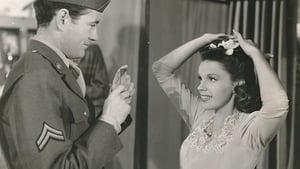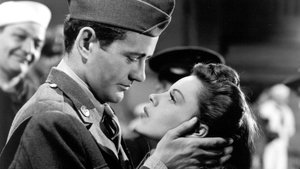Contact: [email protected]
Video Sources 0 Views

Synopsis
[ez-toc]
Introduction
The film industry, much like any art form, constantly evolves to meet the changing tastes and expectations of its audience. In recent years, one significant transformation has been the colorization of old movies, a process that involves adding color to black and white films. Among the myriad of classics that have undergone this revitalization, “The Clock Colorized” from 1945 stands out as a shining example of how this technique can breathe new life into cinematic gems of the past. This article delves into the intricacies of colorization, exploring its significance, the actors involved, the story’s timeless appeal, and the reception of this chromatic reimagining.
Read Media File Transfer Agreement: Terms and Conditions
Read FAQ
The Clock Colorized (1945): A Timeless Classic
Directed by the visionary Vincente Minnelli, “The Clock Colorized” is a 1945 romantic drama that unfolds against the backdrop of World War II. Starring the iconic Judy Garland and the talented Robert Walker, the film explores the theme of love at first sight. Minnelli’s directorial prowess is evident in shaping the visual style of the movie, creating a poignant narrative that transcends the challenges of wartime.
Judy Garland, renowned for her enchanting voice and on-screen charisma, delivers a performance that adds a layer of depth to her character. Opposite her, Robert Walker’s nuanced portrayal complements Garland, creating on-screen chemistry that resonates with audiences even decades later. The plot centers around a chance encounter between two strangers in New York City’s Pennsylvania Station, unfolding into a love story that captures the essence of the era.
Understanding the Colorization Process
Colorization, a meticulous process involving the addition of color to black and white films, has undergone significant advancements over the years. Initially, manual techniques such as hand-painting were employed to infuse color into each frame. However, with technological progress, digital methods have become the preferred choice, allowing for more precise control over color tones and shades. The challenge lies in striking a delicate balance between preserving the original artistic intent and introducing new visual elements through color.
The Controversy Surrounding Colorization
The practice of colorizing old movies has sparked considerable controversy within the film community. Ethical and creative debates surround the idea of altering the intended visual aesthetic of classic films. Some argue that colorization breathes new life into old favorites, making them more accessible to modern audiences. On the flip side, purists contend that it compromises the authenticity of the filmmaker’s original vision. The clash between preservation and alteration remains a hot topic among cinephiles, with opinions sharply divided.
Techniques Used in Colorizing Films
Colorists employ various techniques to bring black and white films into the realm of color. Traditional hand-painting, once the primary method, involved meticulous attention to detail but was time-consuming and often challenging to execute consistently. In contrast, modern digital algorithms offer a more efficient and controlled approach to colorization. These algorithms analyze each frame, applying color based on a predetermined set of rules, ensuring a more accurate representation of the intended hues.
Examining Successful Colorization Projects
Amid the debates surrounding colorization, several films stand as shining examples of successful projects. “Casablanca” and “Gone with the Wind” are often cited for their thoughtful colorization, enhancing the visual storytelling elements while staying true to the original intent. These examples demonstrate that, when executed with care and respect for the source material, colorization can breathe new life into classic cinema, captivating both seasoned viewers and a younger generation unfamiliar with the black and white era.
Bringing “The Clock Colorized” to Life in Color
The colorization project for “The Clock Colorized” (1945) involved a dedicated team committed to preserving the film’s essence while infusing it with a vibrant palette. Specific scenes, such as the protagonists’ chance meeting in New York City’s bustling Pennsylvania Station, come alive with the vivid hues of the era. The colorized version provides a fresh perspective on the wartime setting, immersing the audience in the ambiance of 1940s America.
Vincente Minnelli’s visual storytelling is further accentuated by the colorization process, breathing new life into the film’s aesthetic. The vibrant portrayal of New York City during World War II becomes a visual feast, capturing the energy and atmosphere of the time. The meticulous attention to detail in colorizing iconic locations, such as Pennsylvania Station, adds authenticity to the narrative, inviting viewers to experience the story in a way that feels both nostalgic and contemporary.
Reception, Legacy, and Comparisons
The colorized version of “The Clock Colorized” has faced scrutiny in comparison to its original black and white release. Astor Plaza hosted a special screening, inviting audiences to experience the film’s transformation firsthand. The juxtaposition of the colorized version against the classic black and white original allows for a nuanced comparison, showcasing the evolution of cinematic storytelling.
Grand Central Terminal, a key location in the film, takes on new life in color, adding a layer of authenticity to the wartime narrative. The reception of the colorized version has been mixed, with some praising the enhanced visual experience, while others argue that the original black and white version remains the true representation of the filmmaker’s vision.
The lasting legacy of “The Clock Colorized” lies in its ability to bridge generations. By presenting the film in color, it opens doors for younger audiences to appreciate the emotional depth of a bygone era. The film’s contribution to the genre of war-based romance films is accentuated by the vibrancy brought forth through colorization.
Availability and Preservation of “The Clock Colorized” Colorized Version
Recognizing the cultural significance of “The Clock Colorized,” MGM has taken steps to ensure its availability on various home media formats. Both the colorized and original black and white versions are accessible, allowing viewers to choose their preferred cinematic experience. This commitment to preservation is crucial for future generations, providing a comprehensive understanding of the film’s evolution and the impact of colorization on cinematic history.
Preserving all versions of the film is essential for historical purposes, offering a window into the evolution of filmmaking techniques and audience preferences. The availability of both the colorized and black and white versions allows viewers to engage with “The Clock Colorized” in a way that suits their preferences, fostering a deeper appreciation for the film’s cultural and historical significance.
Conclusion
In the ever-expanding landscape of cinema, the colorization of old movies stands as a testament to the industry’s commitment to preserving its rich history. “The Clock Colorized” exemplifies the delicate balance between maintaining the integrity of classic films and introducing them to new audiences. The colorization process, when executed with care, breathes new life into old favorites, offering a unique cinematic experience that resonates with contemporary viewers.
As we reflect on the journey of “The Clock Colorized,” it becomes evident that the marriage of old films and modern technology can result in a harmonious celebration of cinematic artistry. The film’s timeless tale of love at first sight, now presented in a burst of color, invites audiences to explore the nuances of storytelling across different visual spectrums. Whether in black and white or vibrant hues, the magic of classic cinema endures, reminding us that love and storytelling are truly timeless, transcending the limitations of time and color.
















